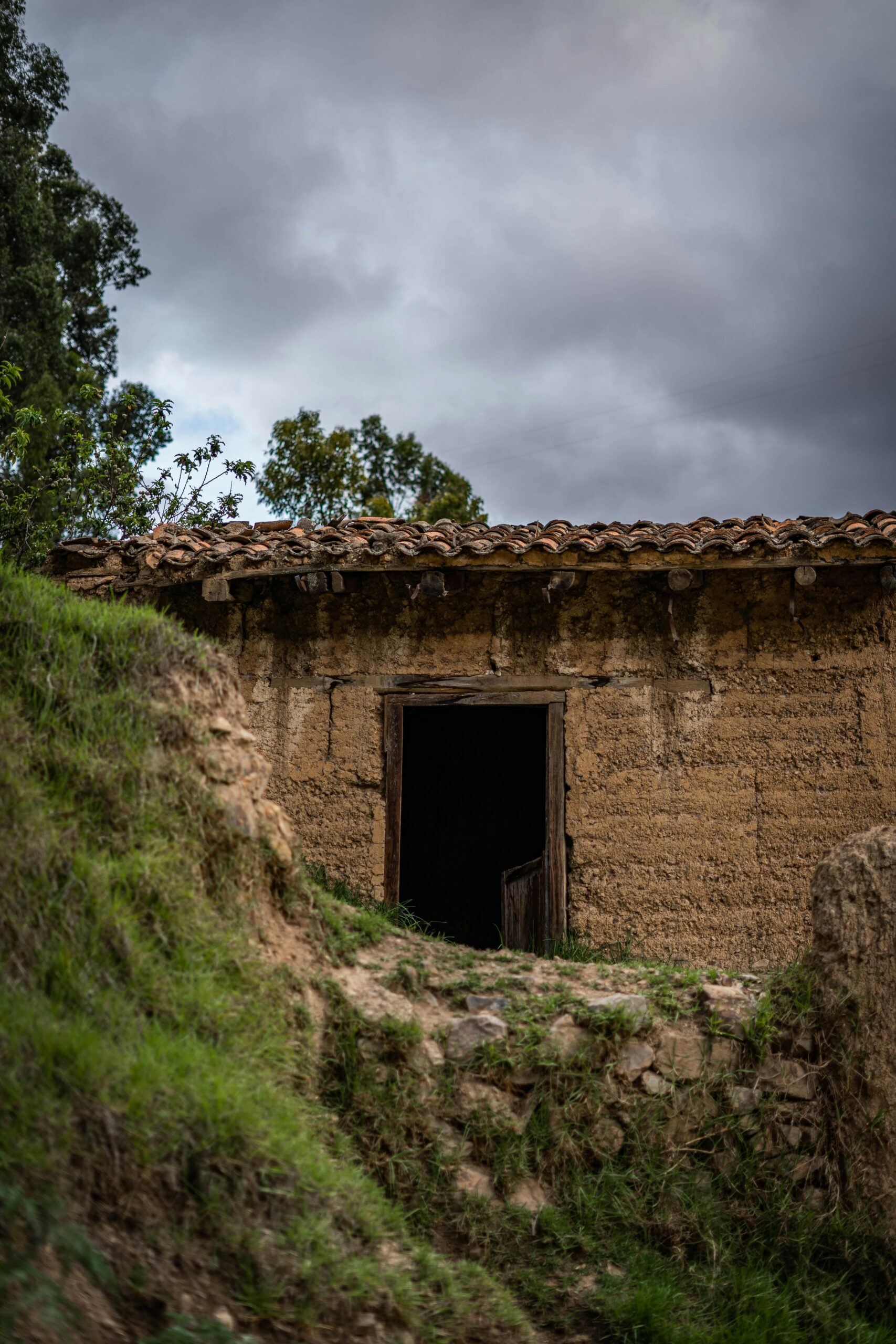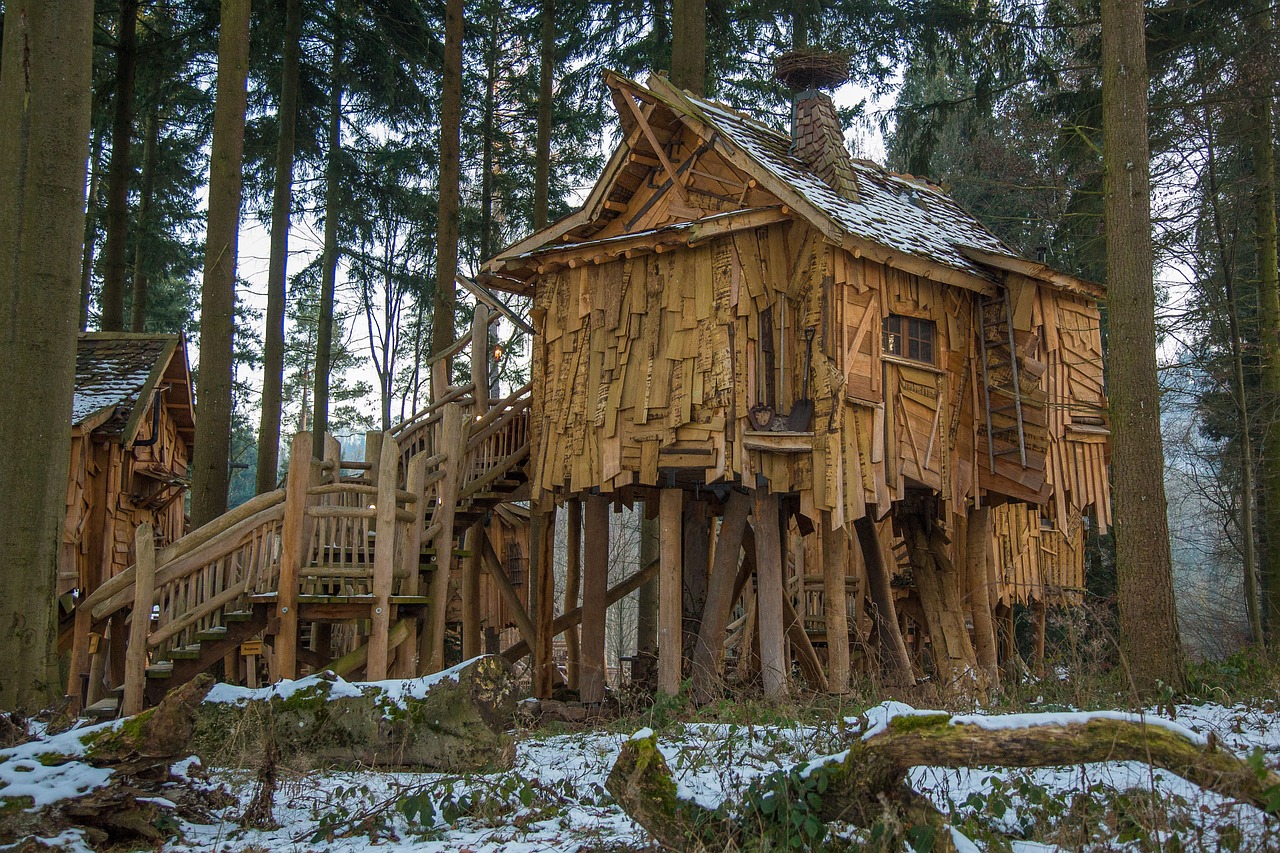Dugout shelters have advantages over above-ground shelters, as well as disadvantages; it will be up to you decide which is a better fit for your terrain, climate, and abilities.
The #1 advantage of a dugout is stealth. If you need to camp where you will not be seen, a dugout is the best answer for you. Any natural-built shelter will blend into the woods so that it’s not obvious it’s there until someone is pretty close to it (or a lot of light is coming out at night), but a dugout generally cannot be seen until someone is right at the door. Of course, if you’re camping somewhere where there are few, if any trees, it’s the only way to be stealthy.
The next advantage is warmth. If you live in a cold climate, dirt will be a much better insulator than anything you can put into an above-ground hut.
If getting up on a ladder to put a roof on a shelter terrifies you, then a dugout solves that problem by lowering the roof to the point you can easily work on it from the ground.
The final advantage is security against animal attacks—namely bears. Generally a dugout has a very small amount of exterior walls and a small door, so it has fewer weak points that a bear can try to bulldoze through.
The #1 disadvantage is the amount of work it takes to dig a hole. In some terrains, it will be impossible to dig a hole at all; the soil will be too much clay or rock to make any progress. But even in wooded areas with decent soil, you will have roots, roots, and more roots. (Ask me about trying to dig a hole in the woods sometime.) Unless you can rent an excavator for a day and dig your hole, it’s not going to be a fun time, more likely than not.
That being said, it is possible to build against an embankment and then bring in dirt from somewhere where it is more easily obtained and use that to cover your house. This involves a lot less digging and the interior walls being made of some other stuff lessens the other disadvantage to a dugout, which is that heavy rains will cause water to seep through the soil into your space. (Although I have seen people trying to mitigate this by putting tarps between the dirt and the logs they’re using for interior walls. A rough floor can also keep your feet and gear out of the mud.)
Pro Tip: You may notice people building huts and dugouts using fire or torches to scorch the bottoms of posts or even wood on exterior doors and walls. In carpentry, this technique is sometimes called by the Japanese name shou sugi ban, as the Japanese are famous for having blackened wooden buildings that have lasted for centuries, but the technique has been used in the West for centuries as well on the bottoms of fence posts and support poles that go into the ground. The fire changes the chemical composition of the wood and makes it resist rotting, insects, etc. In other words, it is the ancient version of pressure-treated lumber.
This stone Hobbit-hole style dugout was built by 1 man over the course of 14 days (you don’t need the full 14 days if you don’t get this fancy). He’s lucky in that he’s working in an area with a very sandy soil, but even so, he does very little digging and mostly builds into an embankment and then adds a bit of dirt to the top of the house.
This is a simple partial dugout (as in it’s only partially underground). This is probably what you would end up with if you are in an area that’s quite flat and you have no hillside to build into. Don’t let the joints on the logs intimidate you and turn you off from building something similar; you can accomplish the same thing with 2x4s. And the pre-fab panels he brings in could be made from pallets or salvaged lumber for next to no cost.
I’ve seen a lot of people putting various types of wood-burning stoves into camping shelters, but he does something I haven’t seen before: he uses clay roofing tiles as a heat shield on the wall behind the stove. These are not likely something you will come across in most of the U.S., but in the UK and Europe, where clay tiles are the #1 choice for roofing material, you should be able to find a few that someone has leftover after a construction project.
This dugout has stacked log walls that do not require any joints. And while this man has taken the time to select very straight, similar-sized logs for a neat, tight fit, if you are not blessed with that kind of lumber or time, you can get away with something less even, and either even it up yourself with an ax, chainsaw, or drawknife, or just chink the gaps with some soft material, like decomposed pine needles, moss, grass/straw, etc., and/or some sort of putty that will harden, like mud or clay or Quikrete. It’s also possible to make the walls with reclaimed materials like railroad ties, 2x4s, etc.—whatever you can source nearby for cheap.
I will give you this piece of advice, however: no matter how soft and sandy a soil you may be blessed to build in, do not dig your dugout with an entrenching tool. Wherever you have to hike to, it’s still less work to carry a full-size shovel to your site than to dig a hole with an entrenching tool.
This group-project dugout was built into the ground (no natural hill present) and is very stealth. Even the wood burning stove has an underground pipe that leaves almost nothing sticking out of the top and the window has a shutter that will sufficiently hide interior light. You will have to be very close to this shelter to realize it exists. Places in the Deep South, where pine trees and sandy soil abound, would be the best-suited for pulling off a replica of this build (which appears to have been done in Russia).
This dugout features cordwood walls, which are a better option if you’re not up to handling large logs by yourself—especially logs big enough to build the size shelter you want; cordwood walls are infinitely scalable. What if you don’t have a chainsaw or access to enough trees to cut all of those logs? Check Craigslist for people who are selling firewood and specifically get some unsplit wood (which should cost less than a rick of split wood). Also you can find people on Craigslist who will advertise free firewood where they have had a tree cut down. This may or may not be in the size pieces you need, but if getting wood is more of an issue than cutting it, this is a source of free wood.
But cordwood is only one option for the walls. I have seen people build walls from plastic bottles stuffed full of plastic bags and other plastic trash (they’re surprisingly strong when packed tight and then placed like this guy is placing wood). If you have a source of loose, loamy or sandy soil, you can fill sandbags and make something more closely resembling a military bunker. There are a lot of options.
This dugout is built between two hills and what dirt is excavated to make more room is then used to cover over the back and roof. The firm soil at this location allows it to be sculpted into “furniture” as well. As commenters noted, however, this little valley between two hills will be full of water when the snow melts and the spring rains come. So this is a build that will only work in the wintertime in areas which only get snow and not rain, or in very dry areas where the rains are very few and far between. (Although in dry climates, be careful that you’re not building in a natural wadi, because storms too far away for you to see can cause flash flooding in your area without warning. Look for signs that water has washed the area out before; a lack of trees in an area that normally has them is not a good sign.)
Are you interested in other bushcraft shelter designs? Check out: From Camping to Home: Bushcraft Shelters as Temporary Housing


